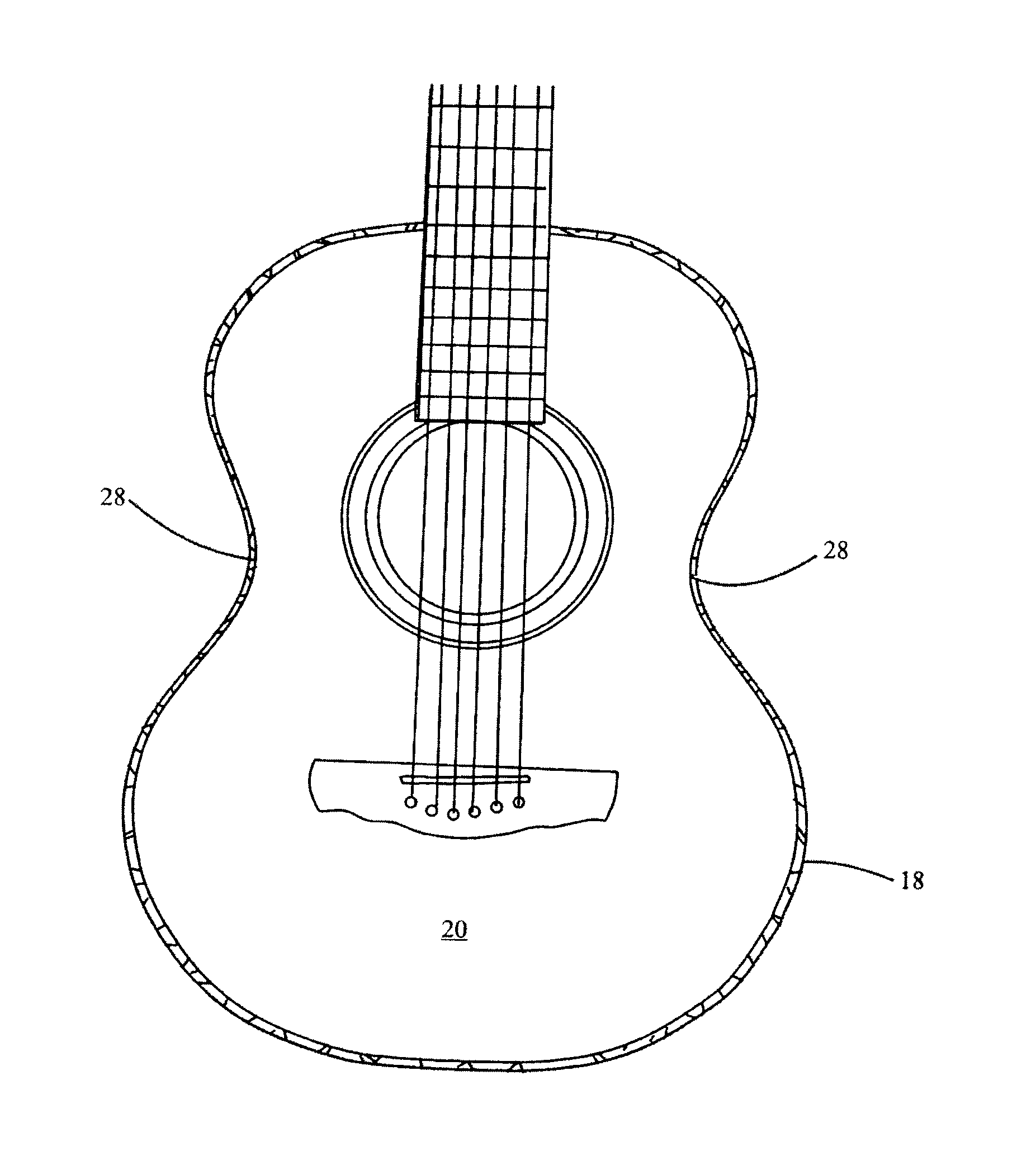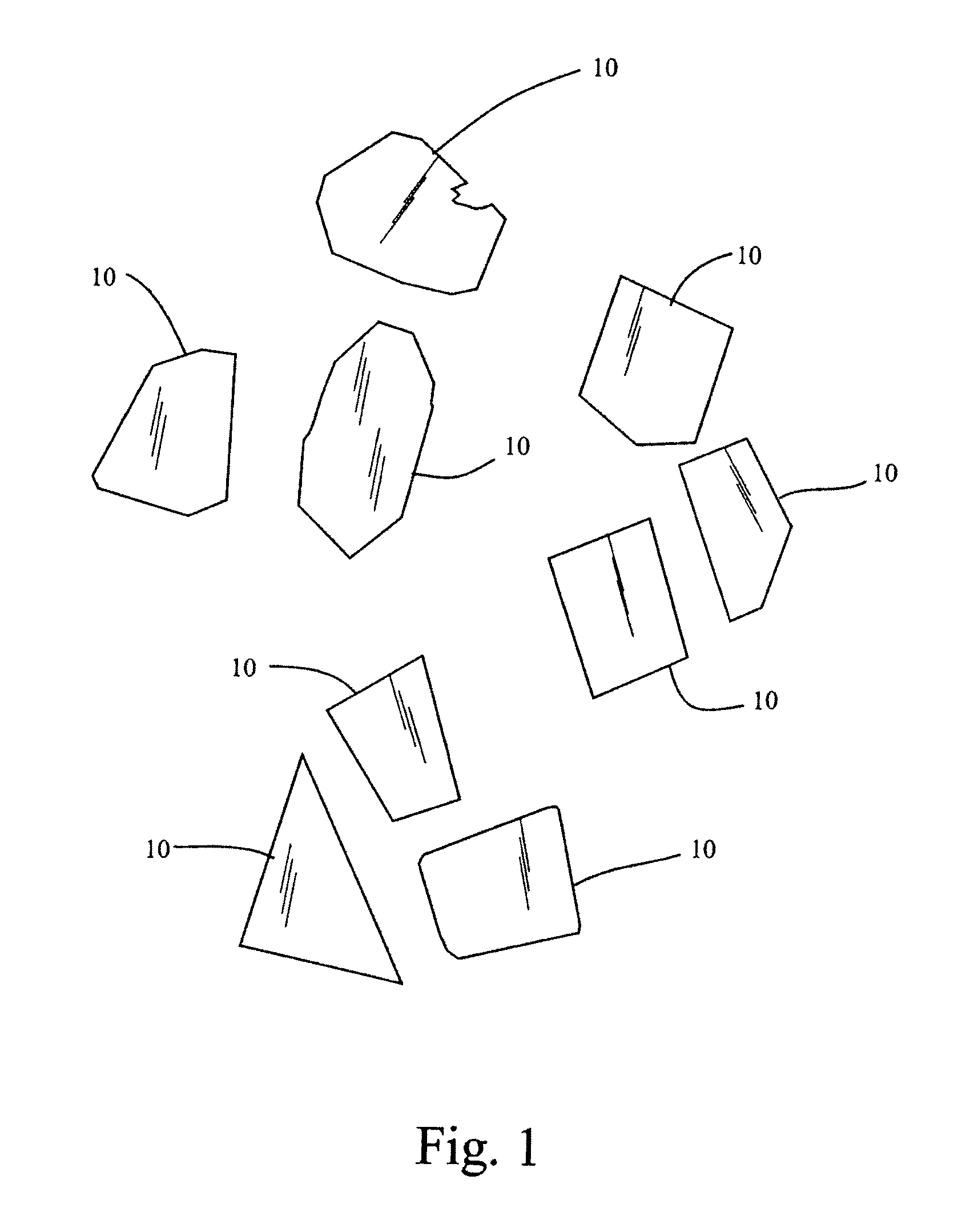Flexible inlay strips and method of manufacturing the same
a technology of flexible inlay strips and inlay, which is applied in the direction of thin material handling, lamination ancillary operations, instruments, etc., can solve the problems of inability to bend the same way, reduce the availability of abalone, oyster, snail and other mollusk shell materials, and the use of organic shell materials for inlay purposes. , to achieve the effect of less tim
- Summary
- Abstract
- Description
- Claims
- Application Information
AI Technical Summary
Benefits of technology
Problems solved by technology
Method used
Image
Examples
first embodiment
[0045]In the method, a thin sheet (approximately 0.005″ thick) of binding material, such as the 3M vinyl tape discussed above, acetate or polyurethane, is affixed to the back side of the separated strips of ornamental blank material, thereby creating a layered configuration comprising, from bottom to top, the rigid substrate 52, the ornamental layer (second layer 38) and the binding material layer (first layer 36) At this point, the strips of the ornamental blank have been milled into the proper width (generally 0.050″) but the strips remain glued to the rigid substrate 52. The inventor herein has found that the 3M vinyl tape discussed above, acetate, or polyurethane are the preferred binding materials because each possesses several critical properties: each are flexible enough to bend but stiff enough to retain a linear path, are impervious to the water bath required for removal of the ornamental blank strips from the rigid substrate 52, and each material holds fast to the ornament...
second embodiment
[0049]In the manufacturing method, as in the embodiment disclosed above, a sheet 12 of ornamental blank material, such as ABALAM or a sheet 12′ of an inorganic material, such as synthetic opal, is glued exposed face down with hide glue or other water soluble adhesive to a rigid substrate 52 such as a sheet of Masonite or similar material, typically having dimensions of W×L. As illustrated in FIG. 11, the glued assembly is thereafter cut into strips 14, but not cutting all of the way through the rigid substrate 52. After being cut, strips 14 are removed from the rigid substrate 52 by dissolving the water soluble adhesive. The strips 14 are thereafter mounted to a second rigid substrate 52′ with a water soluble adhesive, such that the strips are arranged in parallel with one another, the parallel strips defining a long axis oriented along length L of the rigid substrate 52′. The sides of adjacent strips 14 are mounted such that adjacent strips abut one another in direct contact. When ...
PUM
| Property | Measurement | Unit |
|---|---|---|
| thickness | aaaaa | aaaaa |
| angle | aaaaa | aaaaa |
| lengths | aaaaa | aaaaa |
Abstract
Description
Claims
Application Information
 Login to View More
Login to View More - R&D
- Intellectual Property
- Life Sciences
- Materials
- Tech Scout
- Unparalleled Data Quality
- Higher Quality Content
- 60% Fewer Hallucinations
Browse by: Latest US Patents, China's latest patents, Technical Efficacy Thesaurus, Application Domain, Technology Topic, Popular Technical Reports.
© 2025 PatSnap. All rights reserved.Legal|Privacy policy|Modern Slavery Act Transparency Statement|Sitemap|About US| Contact US: help@patsnap.com



